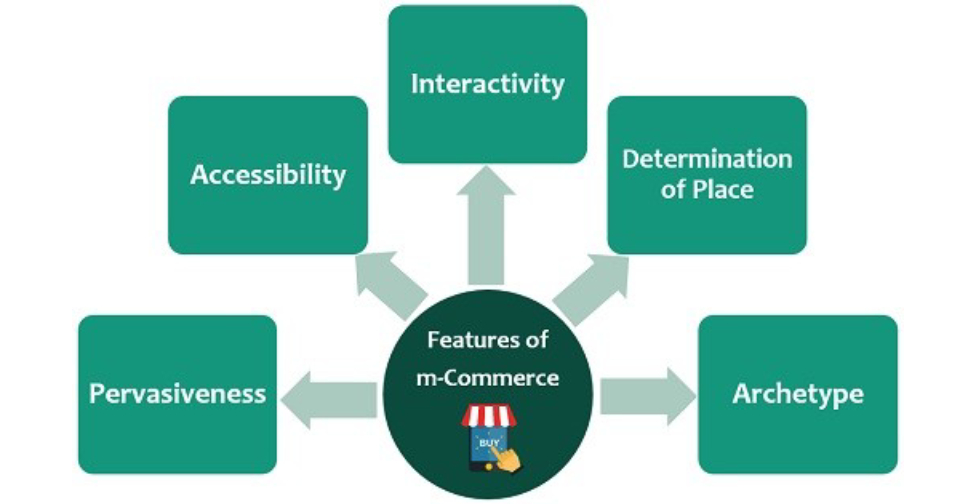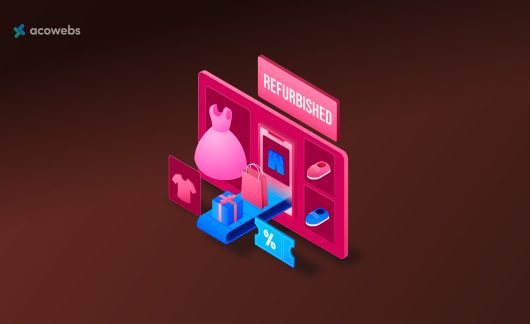Introduction: The Unstoppable Wave of M-Commerce
Welcome to 2025, where the marketplace and business are mostly operated from the palm of your hand. It is not time for a mobile world; it is already here, and those businesses that fail to come to terms with it now will be left behind. And for Shopify store owners, the message is evidently clear: the only way to longevity and customer loyalty lies through the user screens of mobile devices. Well, today’s consumer shops select a product, buy it, and even shop while traveling in a car, in a ticket queue, or in front of the television. Denial of this concept implies denial of a huge portion of potential earnings. As a result, it is significant to comprehend and enforce proper measures. It is impactful to have mobile commerce optimization focused exclusively on achieving more sales for businesses. This article explores the most vital conditions for optimizing your Shopify store for the next 6 years that would not only make it functional but successful in the mobile-first world in 2025, and how to employ m-commerce enablement strategies.
The Shifting Sands: Why Mobile Now Defines E-commerce
The trends suggest that mobile traffic is and will continue to increase year by year, and, in most fields, it exceeds the traffic from desktop devices. As for 2025 consumers, they expect the interactivity to be natural and the design to be defined for applications for smartphones and tablets. During the previous few years, the tendency to get irritated with slow-loading Web pages or a clumsy interface has decreased. They require speed of service, simplicity, and security. This shift necessitates a fundamental rethinking of online retail strategy, moving mobile from an afterthought to the absolute core focus.
Thus, your Shopify store’s success will depend largely on how easy it makes it to purchase goods for its target clients who are always on the move. Such tendencies are notable to the store owners as they indicate the need for improving m-commerce. Not investing in this space not only means losing business; it is actively getting outcompeted on the grounds of m-commerce optimization. The overall business model and customer engagement process are now heavily influenced, and transitions are shifting through mobile devices for discovery, purchase decision, and post-purchase interaction; hence, the concept of mobile commerce optimization remains a constant part of the strategic agenda for businesses.

Beyond Responsiveness: True Mobile-First Design Philosophy
For many years, the only available remedy has been ‘responsive web design,’ which gave a website the ability to adjust its layout to the size of the screen resolution of a visitor’s device. Its refining means, however, in 2025 is just to become a member of it and enjoy its privileges. This means that for marketing to be effective, it has to be realized that a mobile-first approach is necessary for business success. This means writing the specification of the interface in consideration of the least preferred size of a device, then upboxing this for larger gadgets. It entails decluttering the interface to increase the size of the clickable area and space to properly order the content to be easily scanned by the eyes.
Mobile commerce optimization is done by carefully designing each and every element of the store for the handheld format. Such an approach guarantees the modularity of the core experience and does not leave a strong feeling that the application is a set of adaptations for a mobile device from the full-site version. To this end, active players in the entire m-commerce value chain are always sure to improve their designs to meet the existing user demands. Mobile commerce optimization involves conscious design, keeping in mind that mobile usage is constrained by certain factors, such as shorter page browsing.
Streamlining the Funnel: The Crucial Checkout Process
Yet, it is exceptionally painful during the final stages of a mobile purchase, also known as the checkout stage. A complicated and lengthy procedure is also considered a leading factor influencing cart abandonment on mobile devices. In turn, it is optimal to simplify this last stage of the process as much as possible, which is a key aspect of a good strategy. To ensure convenient checkout, it is valuable to incorporate options like Shop Pay, Apple Pay, Google Pay, and other wallets suitable for the targeted audience.
These techniques significantly provide ways of minimizing the manual input of data. The process whereby data had to be keyed in manually from one location to another transforms the process into an almost automatic one. Make the form’s fields as few as possible; gather only data that is needed. Provide feedback on the progress bar and make sure that the error messages can be easily seen and do not confuse the user when the program is used on a small screen. Companies benefit from increasing the rates of commerce when mobile commerce optimization is performed within the checkout funnel. It was nice to arrive at the audience page to see how every click was saved and how every field was pre-filled. It also shows which factors contribute to the checkout abandonment and thus in which areas mobile commerce optimization is needed.
Harnessing Mobile-Native Capabilities for Engagement

Currently, smartphones have features that desktop PCs do not possess, which creates strong opportunities both in terms of interest and sales. Push notifications, when used appropriately, can help customers know of a sale, a new product added to the store, or even products they left behind in their cart. Promotional SMS can be used to send timely offers targeting the individual or to provide up-to-date information on the shipment. Certain promotion initiatives, such as the one presented in the case, can be offered to users who have installed the m-heart app and are physically near the stores or the event venue, if applicable.
Some previously thought unique aspects, such as using the camera for possible try-on of clothes with the help of AR using integrative apps on Shopify, are becoming attainable. Smart businesses leverage these tools as part of their mobile commerce optimization strategy. However, incorporating these features makes it better and gives more value to the customers. In relation to the fourth area for mobile commerce optimization, this must also ensure that the user doesn’t feel that his/her space is being intruded upon.
Page Speed: The Non-Negotiable Element of Mobile Success
For mobile, speed is not a consideration; it is the single major principle. Mobile users are using the cellular networks, and such connections may be slow or unstable compared to broadband connections. Slow page speed results in slow page loading time and a high bounce rate, and, more than that, it affects the conversion rate. Google also gives much importance to mobile page speed in its search engine ranking factor. Therefore, relentless optimization is crucial. Optimize images using WebP and other newest formats, reduce the size of CSS and JS files, enable browser caching, and use a CDN to load resources in the nearest location.
It is advisable to do some site speed testing using some tools like Google PageSpeed Insights and take necessary measures based on the results. Shopify store owners need to focus on how to enhance m-commerce because the load time is a crucial aspect of commercial success. With each millisecond cut off loading time, the site’s attractiveness for the visitor increases, and the chances for conversion with the customer also go up. Updates of the mobile structure involve various aspects and require attention to choosing apps and themes for an optimized mobile business. This optimization payoff guarantees that the visitors do not leave before the products featured on the website load.
Content and Navigation Tailored for Thumbs and Small Screens
It becomes difficult to read lines of text or even move through sometimes several menus on a relatively small screen of a car radio or GPS device. There are often certain differences needed in content presentation when it comes to mobile device users. Despite its being a short and concise document, it is still advantageous to divide it into sections with appropriate headings and subheadings. In the product descriptions, please make the language short and persuasive; calls to action should be immediately presented.
Website menus should be minimalistic and possibly located behind the “hamburger icon” and contain only the crucial sections. It is also important to note that both filtering and search functionalities must be straightforward and efficient in a mobile setting. Mobile commerce optimizers maintain, modify, and develop the content, including text and design, to enhance the readability of ECRM communication. The arrangement of elements on the screen creates a proper direction, leading the user’s gaze in the desired direction. This form of mobile commerce optimization implies that the information provided is easily comprehensible and applicable.
The Rise of Voice Search and Conversational Commerce
With the presence of voice assistants deepening in people’s everyday routine, such an element as commerce broadens its influence. Smartphone and tablet users are more likely to talk to their devices and ask questions to find out what they want using voice search. In essence, when you are optimizing for voice search in Shopify, you are looking for queries or phrases that can be naturally asked. In what manner would a person inquire about your product? Increase the usage of such product features as long-tail keywords and questions in your product descriptions and frequently asked questions.
Your site structure and the schema markup must be clear to the search engine and voice assistant about your range of services. Mobile conversational commerce through chatbots or messaging apps in customer service and sales is also increasing on the same mobile platform. Conveniently, more progressive retailers adjust to future visions and incorporate voice search when optimizing m-commerce. Thus, it is crucial to transform the structured product data into a format that can be scanned for natural language queries. Optimization of mobile commerce is what is developing in this area to get stores ready for future searches. Mobile commerce is an approach to business whereby conversational interfaces are incorporated as part of the plan.
Progressive Web Apps (PWAs) and Dedicated Apps: Deepening Mobile Engagement
Nevertheless, there are some situations when some Shopify merchants may want to go further than a mobile-friendly website and dive deeper into PWAs or order a dedicated native mobile application. The use of the PWA entails an experience similar to that of an app that is directly accessible via the web browser that allows users to comfortably interact with it through the internet by accessing it directly on the platform required that it entails some features such as offline capability (in some cases), and provide push notifications in an app-like manner without the need of the user downloading from an app store.
Native application gives the richest experience in every sense, possibly via application adaptation in the features of the device, as well as customer retention, as the frequent buyers get bonded to the application. The decision will, therefore, depend on the target audience, the amount of money that is available for the marketing campaign, and the objectives of the marketing campaign. Companies recommend PWAs or native apps for mobile commerce optimization when they need to engage users more. Such platforms provide the ability to operate in the background of a user’s device. This is a strategic decision that should be made when working on the optimization of mobile commerce. This entails investment, but it can be done greatly by optimizing mobile commerce.
Measuring Success: Analytics for Continuous Improvement
It is impossible to calculate things that cannot be measured. To maintain constant tracking of mobile-specific indicators, it is advisable to use both Shopify Analytics and Google Analytics 4. Check how much traffic and conversion originates from mobiles, the mobile bounce rates, average time spent on mobile, conversion rate by type of device, and the time taken to load pages on mobile. Evaluate patterns of behavior for mobile users who visit your site, to spot the areas where they may be faltering, or simply exiting. Qualitative data from mobile users can be gathered by using heat maps and session recording tools, particularly selected for mobile users.
The use of data is practically involved in all mobile commerce optimization processes. Frequent benchmarking greatly helps merchants to adjust the strategies and tactics in their mobile commerce optimization in accordance with the tendencies in the users’ behavior. Testing two or more layouts based on mobiles or the checkout flow is a key strategy that can help in enhancing mobile commerce. Companies make changes continually in how they use their mobile channels to sell by referring to performance statistics. This analytical approach means that m-commerce needs to always deliver some form of tangible improvement with regard to the strategy being employed.
Conclusion: Embracing the Mobile Future Today
In such a dynamic environment of 2025, it is not just an avenue but an avenue for a large population of mobile consumers. It has become necessary for the survival and success of the Shopify store that it is becoming mandatory to design your store with an on-the-go shopper in mind. The web and mobile presence requires optimization of the load time, navigation, checkout, and the integration of all features that are peculiar to mobile platforms. There is nothing that can hold back a commerce businessman from achieving his business objectives, that is, if he or she is committed to embracing mobile commerce optimization. What is also important to note is that M-commerce optimization is an ongoing activity of getting the best optimization solutions from mobile consumers and through testing with the advancement in technology. With a steady focus on mobile commerce optimization strategies, your Shopify store is geared towards fulfilling the customers’ needs and expectations so that they fully engage, convert, and grow with your store during 2025 and beyond. The mobile platform is preeminent, and the future belongs to mobile commerce; and mobile commerce optimization is essential for gaining success.
Acowebs are the developer of the WordPress offload media plugin which allows you to offload your media to cloud storage such as Amazon s3, Cloudflare r3, Google Cloud, Digital Ocean and more. Media cloud wordpress also helps to sync your media to cloud storage in 1 click and woocommerce email customizer using which you can easily build and customize WooCommerce emails with a drag-and-drop user interface.












 Login
Login
 Cart
Cart







